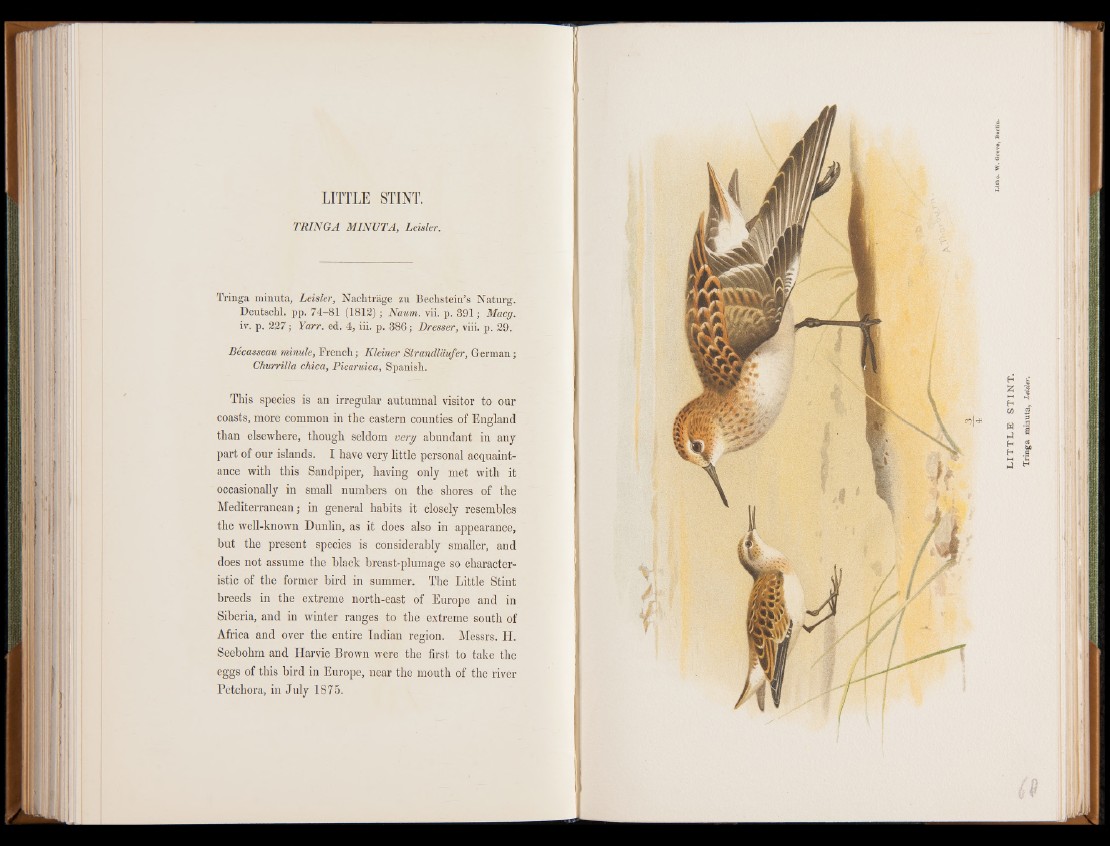
LITTLE STINT.
TRINGA MINUTA, Leisler.
Tringa minuta, Leisler, Nachtràge zu Bechstein’s Naturg.
Deutschl. pp. 74-81 (1812) ; Naum. vii. p. 391 ; Macg.
iv. p. 227 ; Yarr. ed. 4, iii. p. 386 ; Dresser, viii. p. 29.
Bécasseau minule, French ; Kleiner Slrandlaufer, German ;
Churrilla chica, Picaruica, Spanish.
This species is an irregular autumnal visitor to our
coasts, more common in the eastern counties of England
than elsewhere, though seldom very abundant in any
part of our islands. I have very little personal acquaintance
with this Sandpiper, having only met with it
occasionally in small numbers on the shores of the
Mediterranean; in general habits it closely resembles
the well-known Dunlin, as it does also in appearance,
but the present species is considerably smaller, and
does not assume the black breast-plumage so characteristic
of the former bird in summer. The Little Stint
breeds in the extreme north-east of Europe and in
Siberia, and in winter ranges to the extreme south of
Africa and over the entire Indian region. Messrs. H.
Seebohm and Harvie Brown were the first to take the
eggs of this bird in Europe, near the mouth of the river
Petchora, in July 1875.
Tringa minuta, Leisler.